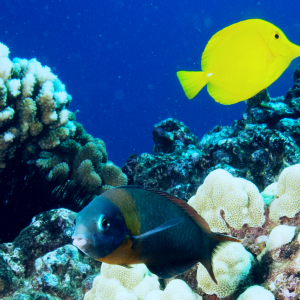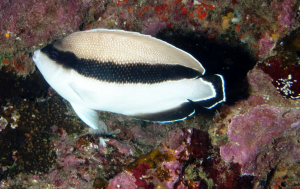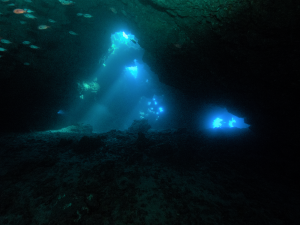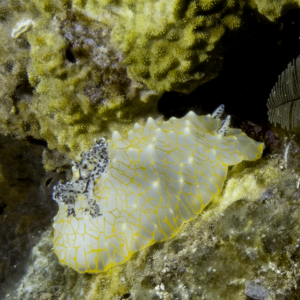Lanai / Cathedral Dive

Having the opportunity to breath underwater is a thrill! Each dive brings the chance to see and experience new creatures since every dive, even in the same location, is always full of surprises. So, what is to make this dive so amazing? The Cathedrals and Lanai ended on being my first ocean dive ever! I had booked this trip with Extended Horizons, and found myself in the best care possible. From extremely knowledgeable staff, and eco-friendly ships, this company knows what they are doing. Remember your first dive in the ocean? Or if you don’t have your diving certificate yet, have a first-hand account; and I recommend on getting certified as a whole new world opens up like never before.
We left the dock early in the morning after going over safety information, and the boat safety as well. Our two dive masters then divided our group of 12 divers into two. Each dive master had six in their group. This makes this very personalized and creates a more relaxing dive for everyone. Each of the dive master, as we are heading out toward the sites, asks each diver how many dives they have been on before, (if this is your first they may have a small quiz for you so think fast), as well as when was their last dive. Just as your first location is reached, they pull out a book of pictures. These are all the animals that we could see during our dive. Since my trip was in January, we were also advised to listen for humpback whale songs between our breaths. They come to this area to give birth and breed, so mating behaviors and rituals are seen here along with newly born calves.

Now, it is time to suit up, jump off the back of the boat, and begin seeing the fish below getting closer and closer. As you and the rest of the group explore around, the large ancient lava are all around you. Swim over or under these large arches, but keep an eye out as there are many critters that love to hide among the niches.
See Hawaiian hard corals on the floor sea floor. While looking at the walls, come across beautiful butterfly fish, wrass, angel fish, green sea turtles, purple starfish, yellowtail coris, parrot fish and more! Run into a pair of endemic Bandit Angelfish and then begin your entrance into a dark hole in the rock.
Even though only the dive master has a dive light, don’t worry as your eyes adjust to the change in light. Begin to absorb the surrounding area as you become stunned with the natural view the ocean has provided. Think you have seen all the churches of this world?
Well, you have just entered one! In the back of the cavern, some of the lava rock have eroded away creating a very special design that paints its own “stained glass window” effect. Follow the sunlight down to the floor of this cavern and see a large rock. Nature has provided not only a window, but an alter area as well!

After your eyes adjust to the dim light, nature made wonder is before you.Even though this view is amazing, don’t forget to look around the lava rocks. Some critters may be hiding in the dark. Indeed they were, as we found a slipper lobster on the wall, a sponge crab, and a large group of squirrel fish. After spending some time in awe of nature’s work, we left one at a time through a small opening on the side. It is called the shotgun because one-at-a-time divers can use the current to help propel them through this area back out into the ocean.
As we left the Cathedral behind, we came across more fish, and even found a lone nudibranch enjoying its time on the lava formations. As our bottom time was coming to an end, we headed up for our 15-minute safety stop, and one by one climbed back on board the ship. Each of us gathered around and shared what each of the two groups saw.

The group just before us had seen a shark in the Cathedral, but it was gone before my group got there. My dream to see a shark while diving will just have to be another adventure it seems. However, our dive masters then pulled out the photo album once more, and we went over information about the animals we saw. We enjoyed our ride back to shore, and parted ways with our newly discovered friends.
To learn more about Extended Horizons, click HERE.